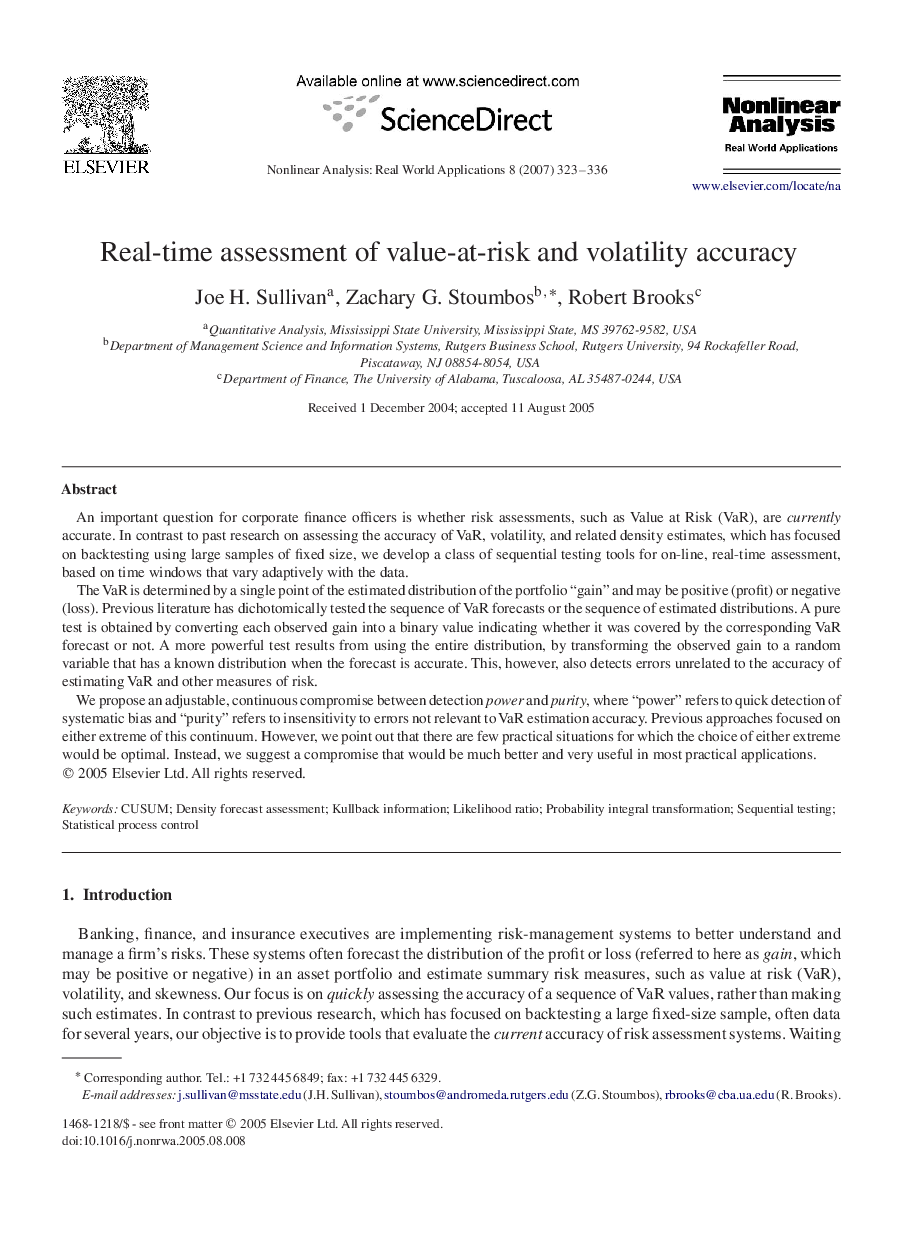| Article ID | Journal | Published Year | Pages | File Type |
|---|---|---|---|---|
| 838481 | Nonlinear Analysis: Real World Applications | 2007 | 14 Pages |
An important question for corporate finance officers is whether risk assessments, such as Value at Risk (VaR), are currently accurate. In contrast to past research on assessing the accuracy of VaR, volatility, and related density estimates, which has focused on backtesting using large samples of fixed size, we develop a class of sequential testing tools for on-line, real-time assessment, based on time windows that vary adaptively with the data.The VaR is determined by a single point of the estimated distribution of the portfolio “gain” and may be positive (profit) or negative (loss). Previous literature has dichotomically tested the sequence of VaR forecasts or the sequence of estimated distributions. A pure test is obtained by converting each observed gain into a binary value indicating whether it was covered by the corresponding VaR forecast or not. A more powerful test results from using the entire distribution, by transforming the observed gain to a random variable that has a known distribution when the forecast is accurate. This, however, also detects errors unrelated to the accuracy of estimating VaR and other measures of risk.We propose an adjustable, continuous compromise between detection power and purity, where “power” refers to quick detection of systematic bias and “purity” refers to insensitivity to errors not relevant to VaR estimation accuracy. Previous approaches focused on either extreme of this continuum. However, we point out that there are few practical situations for which the choice of either extreme would be optimal. Instead, we suggest a compromise that would be much better and very useful in most practical applications.
